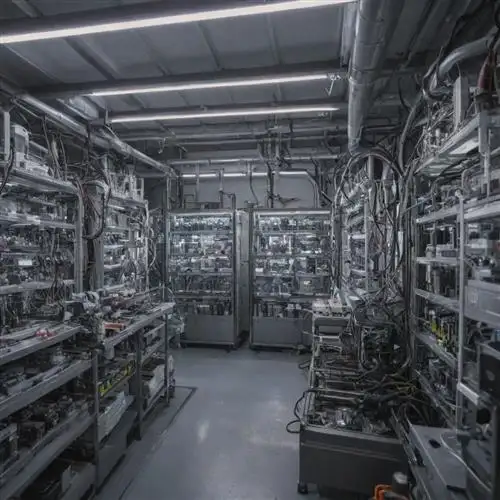
Understanding the Tesla Model 3 Battery System
The Tesla Model 3's battery system is a key component that contributes to its impressive efficiency and performance. At the heart of this system is the lithium-ion battery pack, which provides the energy needed to power the electric motor and drive the vehicle. The battery pack is designed to be highly energy-dense, allowing the Model 3 to achieve exceptional range and efficiency.
One of the standout features of the Tesla Model 3's battery system is its use of a single-piece aluminum case. This design not only provides structural integrity but also helps to protect the individual battery cells from external impacts and environmental factors. The battery pack is strategically positioned within the vehicle's floor, lowering the center of gravity and improving the overall handling and stability of the Model 3.
The battery cells themselves are of the 2170 form factor, which is larger than the 18650 cells used in earlier Tesla models. These 2170 cells offer improved energy density, allowing the Model 3 to pack more energy into a smaller space. Furthermore, the battery management system (BMS) employed in the Model 3 is highly sophisticated, continuously monitoring the temperature, charge state, and overall health of the individual cells within the pack.
This advanced BMS helps to optimize the battery pack's performance, maximizing efficiency and longevity. It also plays a crucial role in the Model 3's impressive fast-charging capabilities, allowing the vehicle to rapidly replenish its battery from low to high levels in a relatively short amount of time.
Another noteworthy aspect of the Tesla Model 3's battery system is its thermal management. The battery pack is actively cooled, using a liquid cooling system that circulates coolant throughout the pack. This helps to maintain optimal operating temperatures, preventing overheating and ensuring consistent performance, even during demanding driving conditions or prolonged high-speed operation.
Regenerative Braking Maximizing Efficiency
One of the key features that sets the Tesla Model 3 apart from traditional gasoline-powered vehicles is its innovative regenerative braking system. This technology allows the electric motor to act as a generator, capturing the kinetic energy that would otherwise be lost during braking and converting it into electrical energy to recharge the vehicle's battery. By harnessing this energy, the Tesla Model 3 can significantly improve its overall efficiency and extend its driving range.
The effectiveness of the regenerative braking system in the Tesla Model 3 is heavily influenced by the driver's driving style and habits. Drivers who are conscious of their braking patterns and actively utilize the regenerative braking system can maximize the vehicle's efficiency and squeeze out every possible mile from a single charge.
Here are some key tips for maximizing the efficiency of the Tesla Model 3's regenerative braking system:
- Anticipate Stops: By anticipating upcoming stops and traffic signals, drivers can gradually release the accelerator and allow the regenerative braking system to slow the vehicle, rather than relying on the traditional friction brakes. This gentle deceleration not only captures more energy but also reduces wear and tear on the brake pads.
- Use the Paddle Shifters: The Tesla Model 3 is equipped with paddle shifters on the steering wheel that allow drivers to control the level of regenerative braking. By using the paddle shifters, drivers can customize the regenerative braking strength to suit their driving conditions and personal preferences.
- Optimize Driving Mode: The Tesla Model 3 offers different driving modes, including Standard, Sport, and Chill. Each mode has a unique regenerative braking setting, with the Chill mode typically providing the most aggressive regenerative braking for maximum efficiency.
- Maintain Proper Tire Pressure: Proper tire inflation is crucial for maximizing the efficiency of the regenerative braking system. Underinflated tires can increase rolling resistance, reducing the effectiveness of the regenerative braking and overall vehicle efficiency.
- Monitor Battery Temperature: The Tesla Model 3's regenerative braking system is designed to adapt to the battery's temperature. In colder conditions, the system may reduce the regenerative braking strength to protect the battery from damage. Drivers should be mindful of the battery temperature and adjust their driving accordingly.
Aerodynamics Optimizing Range
The Tesla Model 3's impressive efficiency is largely attributed to its aerodynamic design. The vehicle's sleek, streamlined body helps minimize air resistance, enabling it to travel further on a single charge compared to less aerodynamic electric vehicles. Let's dive deeper into the key factors that contribute to the Model 3's aerodynamic prowess and its impact on range.
The Model 3's drag coefficient, a measure of a vehicle's aerodynamic efficiency, is a mere 0.23. This is an exceptionally low figure, even for electric vehicles, and is achieved through a combination of meticulous engineering and careful attention to detail. The car's smooth, rounded surfaces, strategically placed air vents, and the absence of unnecessary protrusions all work together to slice through the air with minimal resistance.
One of the most notable aerodynamic features of the Tesla Model 3 is its active grille shutters. These shutters automatically open and close depending on the vehicle's speed and cooling requirements, reducing drag at high speeds and improving airflow to the radiator when needed. This dynamic system helps the Model 3 maintain optimal aerodynamics in a variety of driving conditions.
Another key factor in the Model 3's aerodynamic efficiency is its underbody design. The vehicle's flat, smooth underbody minimizes turbulence and air resistance, directing the airflow cleanly beneath the car. This, combined with the strategic placement of aerodynamic components like the battery pack and suspension, helps the Model 3 slice through the air with minimal disruption.
The Model 3's wheels and tires also play a crucial role in its aerodynamic performance. The vehicle's aero-optimized wheels and low-rolling resistance tires reduce energy losses from tire deformation and air resistance, further enhancing the car's efficiency.
Finally, the Model 3's regenerative braking system contributes to its overall efficiency by recapturing energy during deceleration and converting it into stored electricity. This not only extends the vehicle's range but also reduces the load on the traditional braking system, minimizing the aerodynamic impact of brake components.
Intelligent Energy Management Systems
The Tesla Model 3's Intelligent Energy Management Systems are a true marvel of engineering, designed to maximize the vehicle's efficiency and optimize its power usage. At the heart of this system is the car's sophisticated battery management, which carefully monitors and regulates the flow of energy to ensure optimal performance and longevity.
One of the key components of the Intelligent Energy Management Systems is the battery's thermal management. The Model 3's battery pack is equipped with a liquid cooling system that actively regulates the temperature of the cells, preventing overheating and ensuring consistent performance even in extreme weather conditions. This system works in tandem with the car's regenerative braking, which captures the energy generated during deceleration and stores it back in the battery, further enhancing the vehicle's overall efficiency.
The Intelligent Energy Management Systems also incorporate advanced power management algorithms that dynamically adjust the car's power delivery based on various factors, such as driving conditions, battery state of charge, and even the driver's style. This allows the Model 3 to optimize its energy consumption, ensuring that the available battery capacity is used as efficiently as possible, resulting in an impressive range and reduced energy costs for the owner.
Another notable aspect of the Intelligent Energy Management Systems is the car's ability to communicate with the wider energy grid. The Model 3 can interface with charging stations and home energy systems, allowing it to intelligently manage its charging schedule and even participate in grid-balancing programs, further enhancing its environmental and economic benefits.
Optimizing Efficiency Through Over-the-Air Updates
Tesla's commitment to continuous improvement is exemplified by its over-the-air (OTA) update capabilities. These software updates not only enhance the user experience but also play a crucial role in optimizing the efficiency of the Tesla Model 3. By regularly pushing out OTA updates, Tesla can continuously fine-tune the vehicle's powertrain, energy management systems, and aerodynamics, resulting in improved range and efficiency without the need for physical hardware changes.
One of the primary ways OTA updates enhance efficiency is by optimizing the vehicle's regenerative braking system. Tesla's engineers can analyze data from the fleet and make adjustments to the regenerative braking algorithm, ensuring that the system captures the maximum amount of energy during deceleration and braking. This translates to increased range and reduced energy consumption.
Additionally, OTA updates can optimize the vehicle's thermal management system, which is responsible for maintaining optimal temperatures for the battery pack and other critical components. By fine-tuning the control algorithms, Tesla can improve the efficiency of the cooling and heating processes, minimizing energy usage and extending the battery's lifespan.
Moreover, OTA updates can enhance the Model 3's aerodynamic efficiency. Tesla's engineers can analyze real-world data and implement changes to the vehicle's software-controlled active grille shutters, underbody panels, and other aerodynamic features. These adjustments can result in reduced drag and improved energy efficiency, contributing to the Model 3's impressive range and overall efficiency.
















